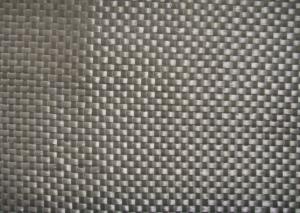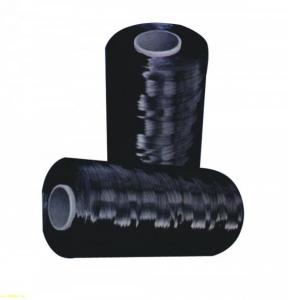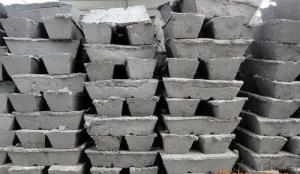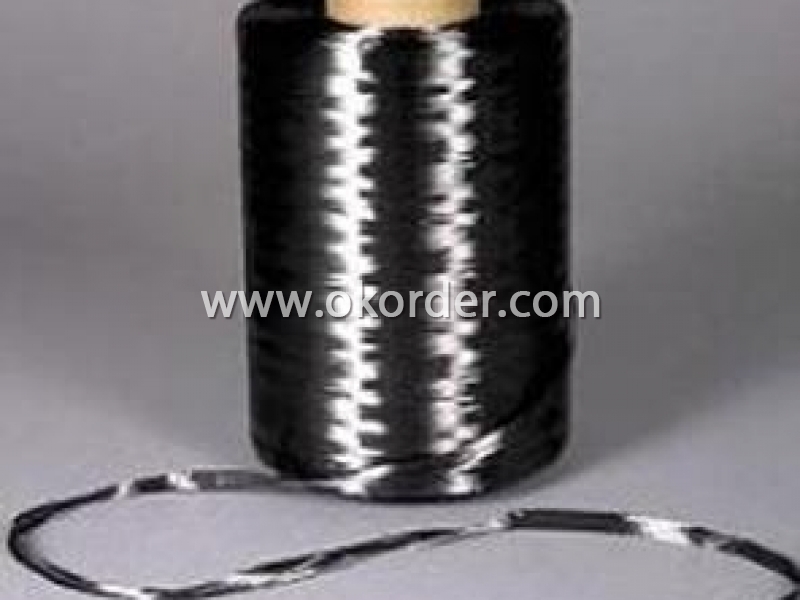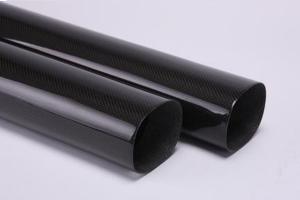Carbon Fiber 3K-T400
- Loading Port:
- China Main Port
- Payment Terms:
- TT or LC
- Min Order Qty:
- 100Kg m.t.
- Supply Capability:
- 1000Ton m.t./month
OKorder Service Pledge
OKorder Financial Service
You Might Also Like
Specifications Carbon Fiber 3K-T400
1. Material: carbonized polyacrylonitrile fiber
2. Filament number:3k
3. Fiber type: T400
4. Tensile strength: 360kgf/mm2
General Data of Carbon Fiber 3K-T400
Weaving Style: Unidirectional, Plain, Twill
Input Available: 3k, 6k, 12k Carbon fiber
Weight: 15 0 ~ 600g / m2
Roll length: To be specified
Typical Rangeof Carbon Fiber 3K-T400
Remark :The above parameters are only in common condition. In case of order, the parameters are subject to the customer's confirmation.
CWP : Carbon plain weave fabric
CWT : Carbon twill weave fabric
CWU : Carbon woven unidirectional fabric
Packaging of Carbon Fiber 3K-T400
Product is manufactured in form of a roll wound on a paper tube and then packed in a plastic film and placed within a cardboard carton. Rolls can be loaded into a container directly or on pallets.
Storage of Carbon Fiber 3K-T400
It is recommended that the carbon fiber fabric are stored in a cool and dry environment. Recommended temperature range of storage is between 10 ~ 30 degree and relative humidity between 50 ~ 75%.The carbon fiber fabric should remain in the packaging until just prior to use.
Packaging & Delivery of Carbon Fiber 3K-T400
Packaging Detail: carton
Delivery Detail: within 20 days
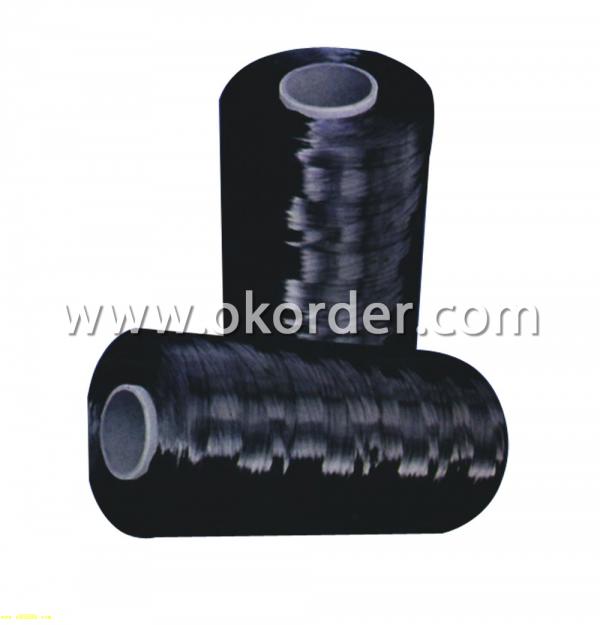
- Q: How does carbon dioxide contribute to ocean acidification?
- Carbon dioxide contributes to ocean acidification by dissolving in seawater and forming carbonic acid. This increase in acidity prevents the normal growth and development of shell-forming organisms such as corals, oysters, and certain plankton species. It also affects the balance of calcium carbonate in the water, making it more difficult for these organisms to build and maintain their shells or skeletons. Overall, the increasing levels of carbon dioxide in the atmosphere lead to the acidification of the oceans, causing detrimental impacts on marine ecosystems and biodiversity.
- Q: What are the uses of carbon nanotubes?
- Carbon nanotubes have a wide range of uses across various fields. They are used in electronics for creating smaller and more efficient transistors, sensors, and conductive materials. In materials science, they enhance the strength and flexibility of composites, making them ideal for use in aerospace and automotive industries. They also show promise in drug delivery systems and cancer treatment due to their ability to penetrate cells. Additionally, carbon nanotubes have applications in energy storage, water purification, and even in the development of lightweight and durable sports equipment.
- Q: How is carbon used in the production of steel?
- Carbon is a crucial element in the production of steel as it directly affects the properties and characteristics of the final product. In the steelmaking process, carbon is primarily used as an alloying element, which means it is added in controlled amounts to modify the steel's composition. One of the most common methods of steel production is through the basic oxygen furnace (BOF) process. In this process, carbon is added to the molten iron to create the desired steel grade. The amount of carbon added determines the steel's hardness, strength, and other mechanical properties. Generally, higher carbon content results in harder and stronger steel. Carbon is also used in another steelmaking process called the electric arc furnace (EAF) process. Here, recycled steel scrap is melted down using an electric arc to produce new steel. Carbon is added during this process to adjust the carbon content as required for the desired steel grade. Furthermore, carbon plays a crucial role in the heat treatment of steel. Through processes like carburizing and quenching, carbon is used to enhance the surface hardness and wear resistance of steel components. This is particularly important in industries such as automotive, aerospace, and construction, where the durability and strength of steel are paramount. In summary, carbon is essential in the production of steel as it directly influences the mechanical properties and overall quality of the final product. From adjusting the carbon content to controlling the heat treatment processes, carbon is a vital component in the steelmaking industry.
- Q: What are the impacts of carbon emissions on the stability of deserts?
- Carbon emissions have significant impacts on the stability of deserts. One of the key consequences is the exacerbation of desertification, which refers to the process of fertile land turning into desert due to various factors, including climate change. Carbon emissions contribute to global warming, leading to higher temperatures and increased evaporation rates, which in turn result in reduced soil moisture and increased aridity in desert regions. This intensifies the process of desertification, causing deserts to expand and become more unstable. Furthermore, carbon emissions contribute to the alteration of precipitation patterns, which directly affects the stability of deserts. As climate change leads to shifts in weather patterns, some areas may experience reduced rainfall, while others may face more frequent and intense droughts. These changes in precipitation can further exacerbate desertification processes and lead to increased desert instability. Another impact of carbon emissions on desert stability is the increased frequency and intensity of dust storms. As global warming leads to drier conditions and reduced vegetation cover, the risk of dust storms becomes higher. These storms can transport vast amounts of fine particulate matter, including dust and sand, over long distances, resulting in a range of negative consequences. Dust storms can damage infrastructure, harm human health, degrade air quality, and further contribute to desertification processes by removing fertile topsoil. Additionally, the impacts of carbon emissions on deserts are not limited to their ecological stability but also have socio-economic implications. Many communities in desert regions rely on agriculture and natural resources for their livelihoods. The destabilization of deserts due to carbon emissions can lead to reduced agricultural productivity, increased food insecurity, and economic hardship for these communities. Moreover, the displacement of people from desert regions due to desertification can lead to increased migration and social instability. In conclusion, carbon emissions have far-reaching impacts on the stability of deserts. They contribute to the intensification of desertification processes, alter precipitation patterns, increase the frequency and intensity of dust storms, and have socio-economic consequences. Addressing carbon emissions through climate change mitigation strategies is crucial to minimize these impacts and ensure the long-term stability of desert ecosystems and the communities that depend on them.
- Q: How can carbon capture and storage be implemented?
- Carbon capture and storage (CCS) can be implemented through a three-step process. First, carbon dioxide (CO2) is captured from industrial emissions sources such as power plants or factories. This can be done using technologies like post-combustion capture, pre-combustion capture, or oxy-fuel combustion. Second, the captured CO2 is transported via pipelines or ships to suitable storage sites. These storage sites can include deep underground geological formations, such as depleted oil and gas fields or saline aquifers. Finally, the CO2 is securely stored in these underground reservoirs, preventing it from being released into the atmosphere. Implementing CCS requires the development of appropriate infrastructure, supportive policies, and investment in research and development to make the process economically viable and environmentally sustainable.
- Q: Material characteristics of carbon fiber
- Carbon fiber is a kind of new material with excellent mechanical properties due to its two characteristics: carbon material, high tensile strength and soft fiber workability. The tensile strength of carbon fiber is about 2 to 7GPa, and the tensile modulus is about 200 to 700GPa. The density is about 1.5 to 2 grams per cubic centimeter, which is mainly determined by the temperature of the carbonization process except for the structure of the precursor. Generally treated by high temperature 3000 degrees graphitization, the density can reach 2 grams per cubic mile. Coupled with its weight is very light, it is lighter than aluminum, less than 1/4 of steel, than the strength of iron is 20 times. The coefficient of thermal expansion of carbon fiber is different from that of other fibers, and it has anisotropic characteristics. The specific heat capacity of carbon fiber is generally 7.12. The thermal conductivity decreases with increasing temperature and is negative (0.72 to 0.90) parallel to the fiber direction, while the direction perpendicular to the fiber is positive (32 to 22). The specific resistance of carbon fibers is related to the type of fiber. At 25 degrees centigrade, the high modulus is 775, and the high strength carbon fiber is 1500 per centimeter.
- Q: What are the effects of carbon emissions on the stability of alpine ecosystems?
- Carbon emissions have significant effects on the stability of alpine ecosystems. Increased carbon dioxide levels contribute to higher temperatures, leading to changes in snowpack, glacial melt, and altered precipitation patterns. These changes disrupt the delicate balance of alpine ecosystems, impacting plant and animal species' distribution, abundance, and phenology. Additionally, increased carbon emissions contribute to ocean acidification, which affects the health of marine ecosystems that alpine ecosystems rely on for nutrients. Overall, carbon emissions threaten the stability and biodiversity of alpine ecosystems, with potential cascading effects on global climate systems.
- Q: How do human activities contribute to carbon emissions?
- Carbon emissions are contributed to by human activities in several ways. One of the main sources of carbon dioxide emissions is the burning of fossil fuels for electricity, transportation, and industry. When coal, oil, or natural gas is burned, carbon is released into the atmosphere. Additionally, carbon emissions are also caused by deforestation and changes in land use. Trees play a critical role in absorbing carbon dioxide, so when forests are cleared for agriculture or urbanization, the stored carbon is released back into the atmosphere. Furthermore, carbon emissions are released through industrial processes such as cement production and chemical manufacturing. Lastly, methane, a powerful greenhouse gas that contributes to global warming, can be produced through human activities like agriculture and livestock farming. In conclusion, our reliance on fossil fuels, deforestation, industrial processes, and certain agricultural practices all contribute to carbon emissions, worsening the problem of climate change.
- Q: Who can explain that bare feet on fire carbon don't burn feet?
- The fire is red carbon, but no signs of fire and water after scald. Actually, that's a very simple physical phenomenon. The most mysterious matter where we can buy, can make the carbon fire red instantly cool, people ran fast, naturally not hurt hair.These two substances, one is white borax, and the other is red cinnabar (also known as cinnabar). It turns out that the crystals are dissolved because they absorb large amounts of heat. When borax or cinnabar scattered on the surface of carbon fire, because the heat will make the wood surface temperature drop.
- Q: How does carbon impact the quality of freshwater systems?
- Freshwater systems can be significantly affected by carbon, with one of the main ways being through the emission of carbon dioxide (CO2). Excess CO2 released into the atmosphere can dissolve in rainwater and form carbonic acid, leading to the acidification of freshwater bodies and a decrease in pH levels, making the water more acidic. The high levels of acidity can have negative consequences for various freshwater organisms, including fish, amphibians, and invertebrates. It can disrupt their reproductive systems, hinder their growth and development, and even result in their death. Additionally, increased acidity can also impact the availability of essential nutrients in the water, further affecting the health and survival of aquatic life. Another impact of carbon on freshwater systems is through the process of eutrophication. Excessive carbon can enter freshwater bodies through runoff from agricultural fields or wastewater treatment plants. This surplus of carbon acts as a nutrient, fueling the growth of algae and other aquatic plants. As these plants multiply, they can form dense mats on the water's surface, blocking sunlight and depleting oxygen levels. The depletion of oxygen can lead to hypoxia, a condition characterized by dangerously low oxygen levels that can result in the death of fish and other organisms. Additionally, the excessive growth of algae can cause algal blooms, which can release toxins into the water, further compromising the quality of freshwater systems. Furthermore, carbon also plays a role in influencing the temperature of freshwater systems. Increased levels of carbon dioxide in the atmosphere contribute to global warming, which raises the overall temperature of the planet. Consequently, freshwater systems may experience higher water temperatures, leading to ecosystem changes. Some species may struggle to adapt to these warmer conditions, while invasive species, for example, may thrive. In conclusion, carbon exerts a significant influence on the quality of freshwater systems. It can result in acidification, eutrophication, and temperature changes, all of which have adverse effects on the health and survival of aquatic organisms. To safeguard the integrity and long-term sustainability of freshwater systems, it is essential to address carbon emissions and reduce our carbon footprint.
1. Manufacturer Overview
| Location | Shanghai, China |
| Year Established | 1995 |
| Annual Output Value | Above US$ 20,000 |
| Main Markets | Mid East; Eastern Europe; North America |
| Company Certifications | ISO 9002:2000 |
2. Manufacturer Certificates
| a) Certification Name | |
| Range | |
| Reference | |
| Validity Period |
3. Manufacturer Capability
| a) Trade Capacity | |
| Nearest Port | Shanghai |
| Export Percentage | 20% |
| No.of Employees in Trade Department | 100 People |
| Language Spoken: | Chinese |
| b) Factory Information | |
| Factory Size: | Above 100,000 square meters |
| No. of Production Lines | Above 5 |
| Contract Manufacturing | OEM Service Offered; Design Service Offered |
| Product Price Range | Average |
Send your message to us
Carbon Fiber 3K-T400
- Loading Port:
- China Main Port
- Payment Terms:
- TT or LC
- Min Order Qty:
- 100Kg m.t.
- Supply Capability:
- 1000Ton m.t./month
OKorder Service Pledge
OKorder Financial Service
Similar products
Hot products
Hot Searches
Related keywords

